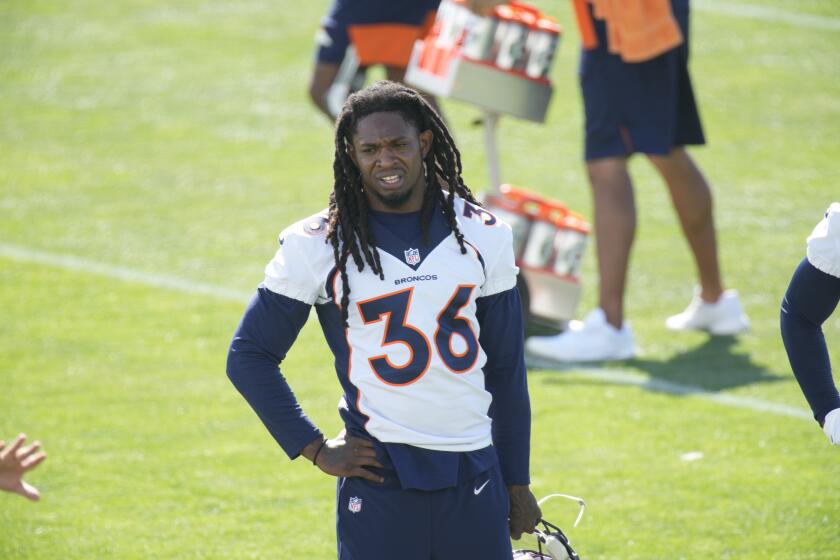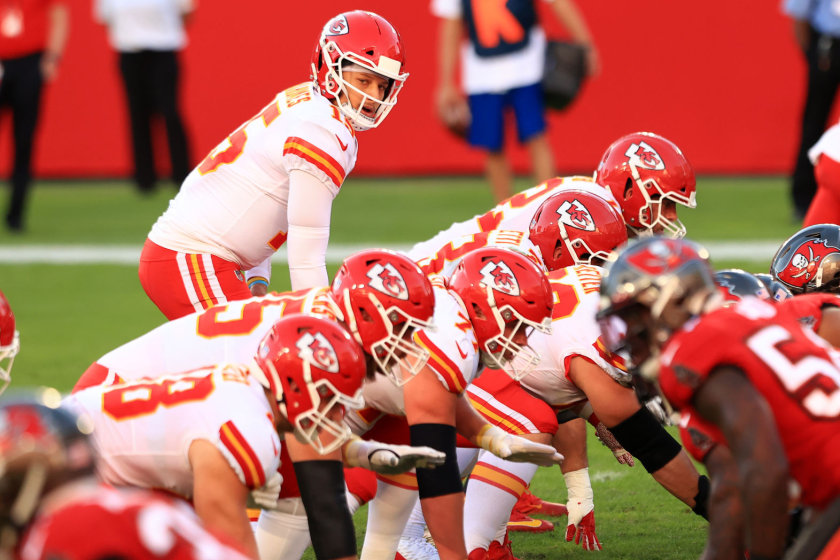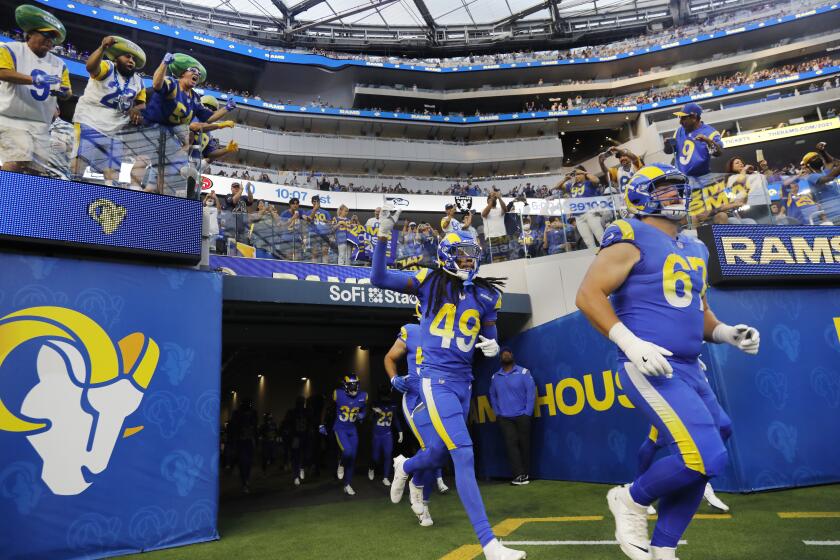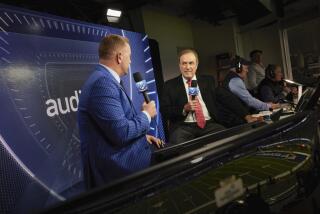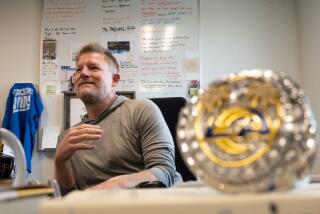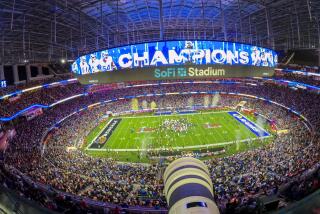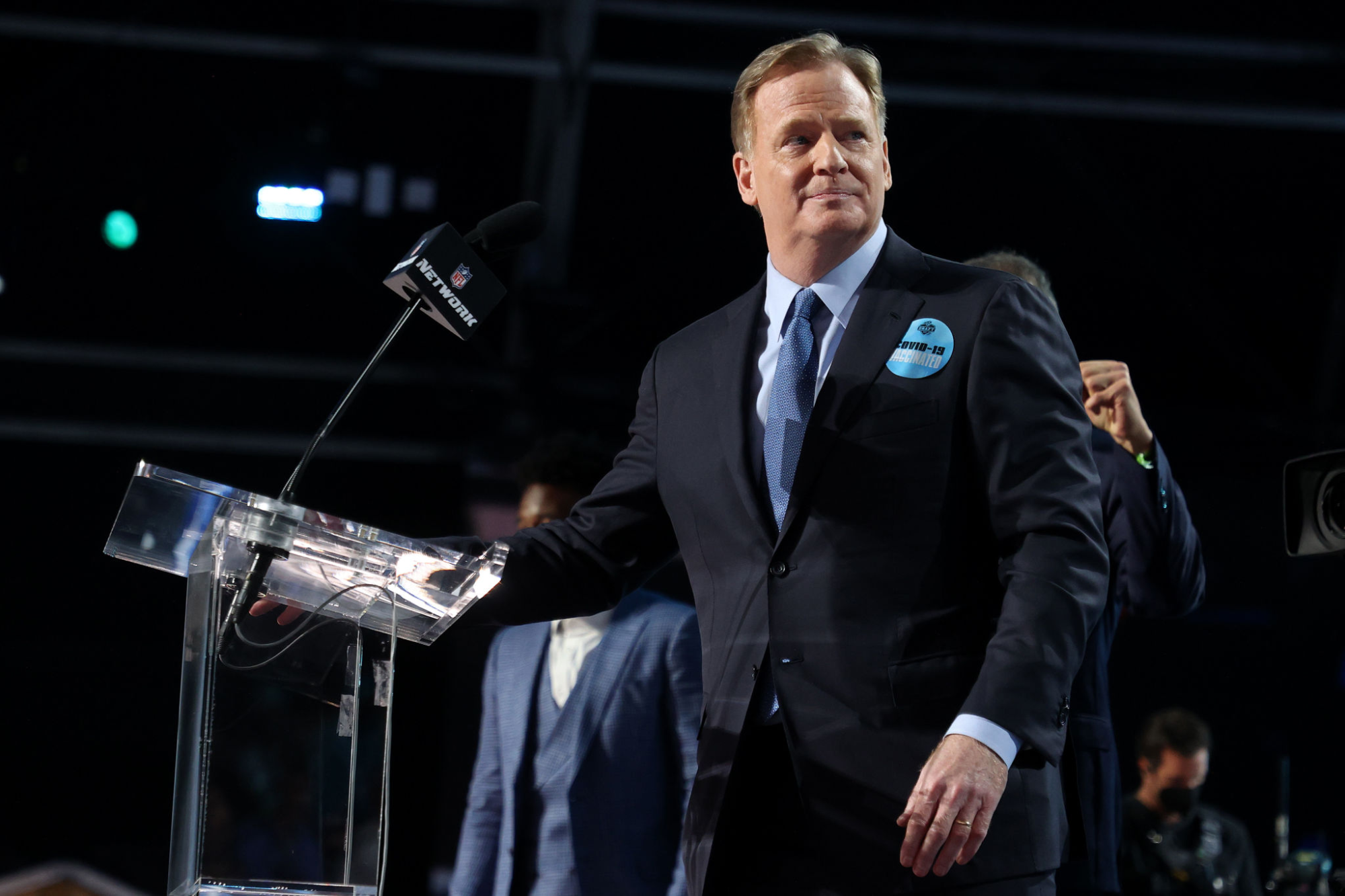
- Share via
Beyond fans returning to stadiums and authentic cheers instead of simulated noise, the NFL is kicking off the 2021 season with something it didn’t have last fall — a pandemic playbook that’s proven.
As other leagues staged abbreviated seasons and quarantined their players in hopes of shielding them from COVID-19, the NFL navigated its way through an entire schedule, postponing when necessary, continually adjusting safety protocols, but never canceling a game.
“The NFL proved things that I don’t think people thought we could do,” NFL commissioner Roger Goodell said.
In multiple interviews with the Los Angeles Times, Goodell and more than two dozen people — league executives, front-office personnel, players and medical professionals — close to the situation reconstructed the fragile process of staging a season amid a pandemic, and the commissioner’s focus to safely complete all 256 regular-season games, the playoffs and Super Bowl without relying on an NBA-style bubble.
A league that at times has had a fraught relationship with its players found common ground, with executive director of the NFL Players Assn. DeMaurice Smith saying the players and NFL management worked together to make sure they could play a full season.
That bond has been tested this offseason as the Delta variant spurred a new surge in cases and vaccine hesitancy cropped up throughout the league, but the NFL likely will draw on its wins from last season as it pushes to overcome new hurdles in this one.
“History will look back at last year and say it was more than just a little remarkable that we were able to play the season uninterrupted,” Indianapolis Colts owner Jim Irsay said. “It really was incredible and special for the country what we were able to deliver to fans and people who needed a distraction and something to enjoy.”
General manager Les Snead likes the roster the Rams have assembled but admits that doesn’t matter much until the players hit the field.
The league relied on rigorous testing, tough enforcement of its own protocols and transparency with the players, staff and public. But candor had its limits. Unbeknownst to almost everyone, including many team owners, Goodell and a small group of schedulers secretly had a plan for a 10-game season that would start in November and delay the Super Bowl.
Now, new and different challenges.
Fans are returning to stadiums, and children to schools. Restaurants and bars welcome customers. Yet, even though more than 90% of NFL players have received at least one vaccine shot, the threat of outbreak lingers.
“Protocol fatigue, COVID fatigue, it’s a real thing and it’s something we’re trying to be mindful of,” said Larry Ferazani, the league’s deputy general counsel focused on labor relations. “If we don’t get through ’21 and play every game, then everything we did in ’20 is forgotten.”
———
On March 11, 2020, Goodell and a team of NFL executives convened in the Bay Area with tech companies as part of the ongoing broadcast and streaming video negotiations. Goodell noticed the eerie emptiness of the sprawling Google campus, a sign the company grasped the danger early. That same day, the World Health Organization classified COVID-19 as a pandemic.
On the trip back to White Plains, N.Y., the group continually checked their phones, trying to keep up with the rapidly changing sports landscape. The Big Ten announced it would continue its men’s basketball tournament, only without spectators. The Ivy League canceled sports for the rest of the year. In Oklahoma City, an NBA game was scrubbed after warm-ups and stunned fans streamed out of the arena.
The NFL coterie had its own major worry — the planned draft extravaganza in Las Vegas seemed doomed. Voices outside the league already urged the league to delay free agency and the draft. To them, moving forward was tone deaf.
Goodell had a different viewpoint.
“He had this North Star of, ‘We are going to get through this,’ ” said Peter O’Reilly, the league’s executive vice president of club business and league events. “It was, ‘We’re going to follow the docs and the science. We’re going to do right by the players and clubs. We’re going to do right by our fans. We’re going to model the right behavior and use our platform in a positive way.’ ”
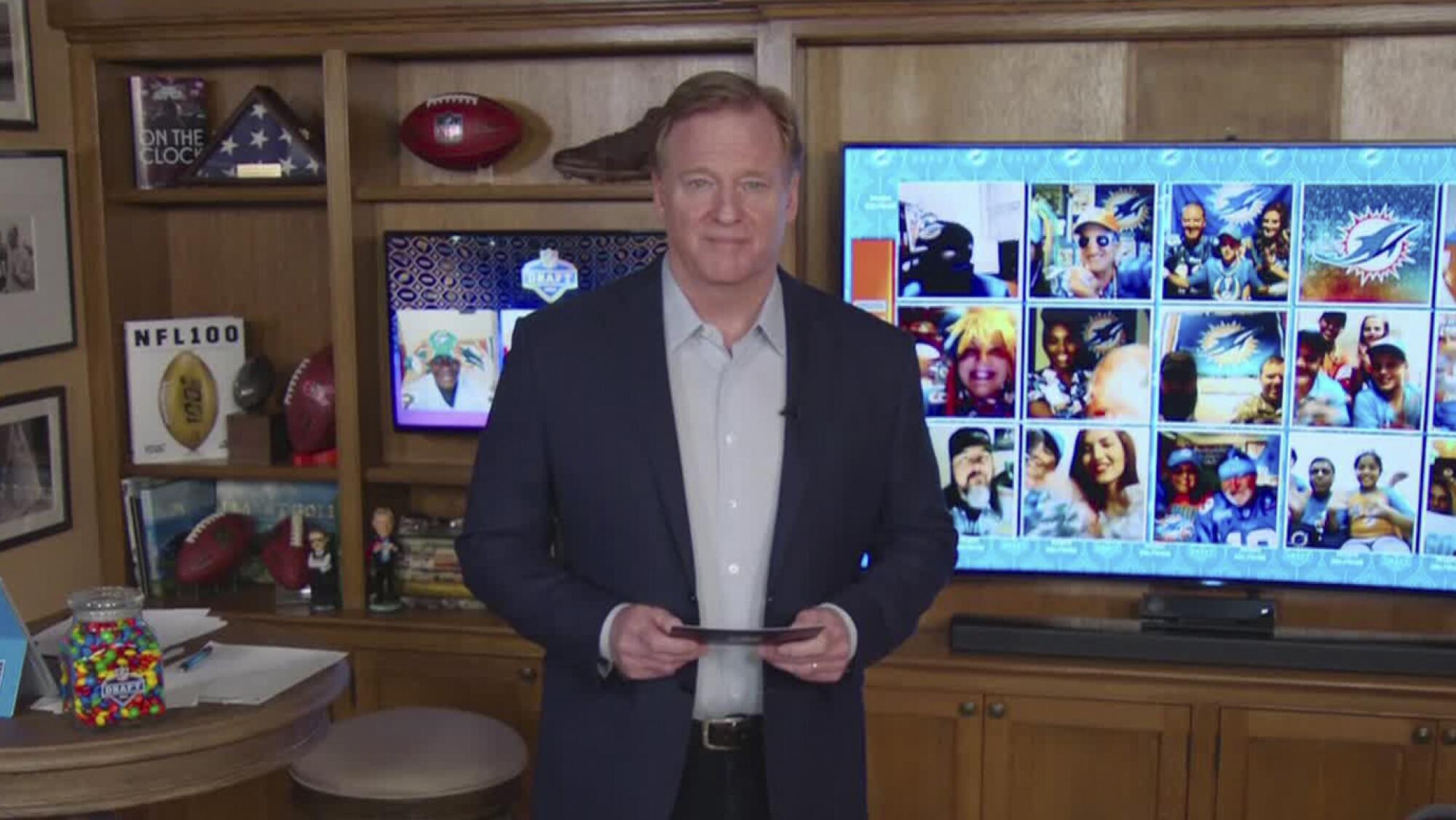
The commissioner huddled every day with Dr. Allen Sills, the league’s chief medical officer, and Jeff Miller, an executive vice president who oversees health issues. The challenge: how to conduct a draft and keep everyone safe. Goodell favored a virtual draft, as long as all teams could be on equal footing. However, different parts of the country had different rules with some facilities staying open, others not.
The pushback within the league was vehement, especially from purists resolutely opposed to changing the draft that dramatically. Goodell fielded calls from concerned general managers and coaches. Though sympathetic to their complaints, he ultimately advised them to figure it out.
Chargers GM Tom Telesco was among the nonbelievers.
“I’m not stubborn and inflexible; I can change,” Telesco said. “But when you’re part of drafts and running drafts for years, there’s one way of doing it.”
Realizing the futility of trying to sway the league, Telesco decorated the dining room of his Newport Beach home with a couple of surfboards to accentuate the Southern California vibe, had the team’s IT director set up in his courtyard (for safety reasons, he couldn’t bring him into the house) and made room for Spectrum to park in back. A couple of internet technicians turned on the TV in their van, sat outside in lawn chairs and watched the first two days of the draft. The Telescos bought them pizza.
The three-day virtual draft evolved into an unexpected sensation. It had a rough-hewn quality, with the commissioner announcing the names from the basement of his New York home. He changed into increasingly casual attire, from sports coat to sweater to quarter-zip to T-shirt and eventually plopped into his leather recliner and ate M&M’s.
Chargers head coach Brandon Staley says his defense is better after adding familiar faces of corner Trey Marshall and lineman Eric Banks.
Punchy after all those hours in the basement, the small production staff entertained themselves between picks by pouring out hundreds of M&M’s, giving the impression Goodell had gorged them by the fistful. They clandestinely moved a Mike Ditka bobblehead around the set with every selection.
Occasionally, Goodell stumbled over his words and mispronounced some names, even those he repeatedly practiced off-camera. Kids and dogs made cameos in the background of coaches and GMs. In the later rounds, the relaxed commissioner attended to household chores between picks, replacing his storm doors with screens.
Later, Goodell got a note from a GM with a changed perspective.
“I just wanted to let him know that he was right and I was wrong,” Telesco said. “I’m glad we followed his lead with that.”
———
The 2020 season warranted all sorts of contingency plans, but the league had an advantage in that it could pull a blueprint from its past. In 2011, a lockout and contentious CBA negotiations put the season at risk, and the league built its schedule to collapse like an accordion if necessary. That became a template.
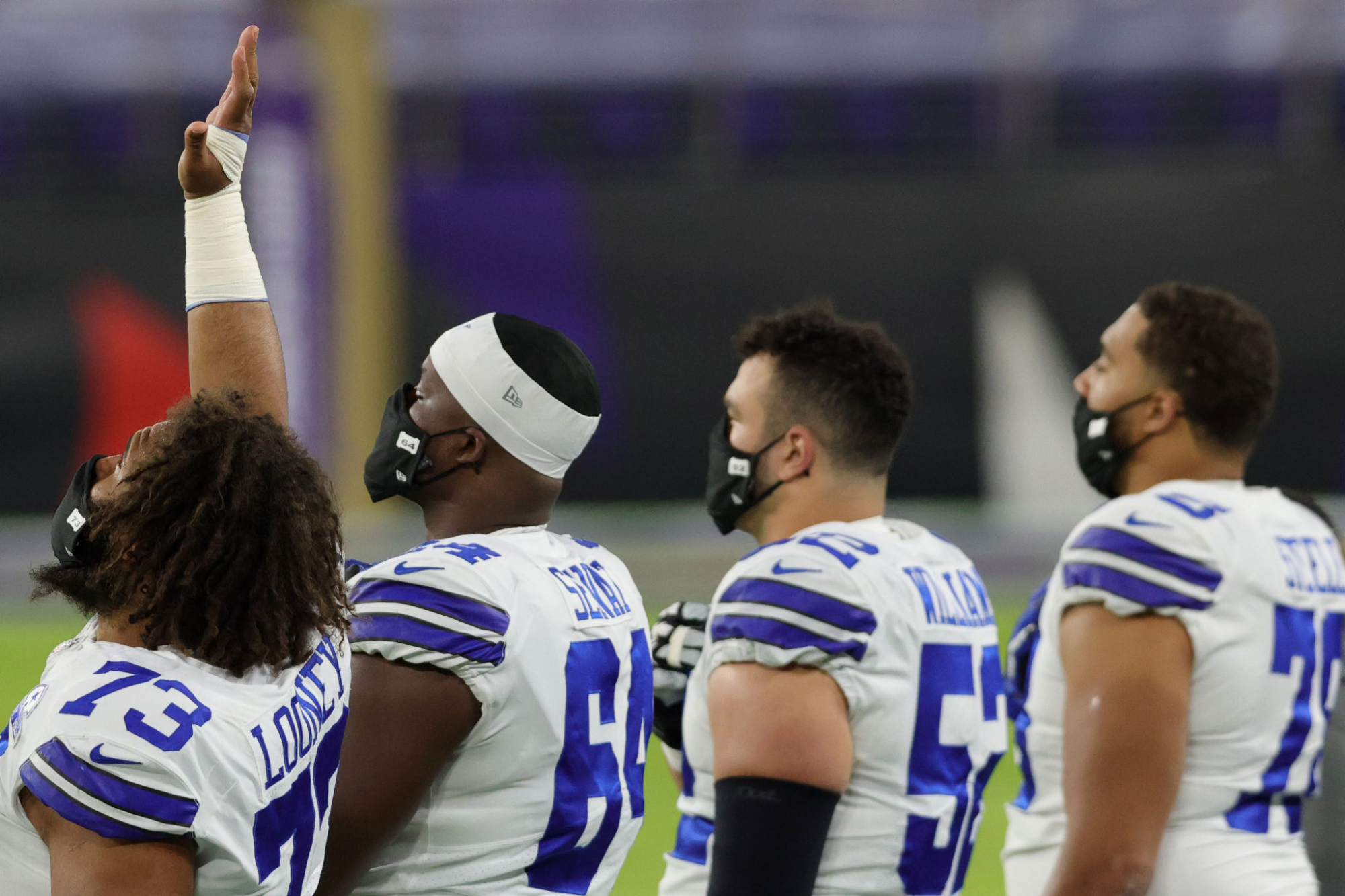
Although the league never publicly veered from its position that the season would start on time, behind the scenes, Goodell and schedule maker Howard Katz devised contingency plans.
One called for a 10-game season that would start on Thanksgiving Day, with the Super Bowl pushed to late February. The CBA allowed for the league to delay the Super Bowl all the way to mid-March without permission from the union. There was strict silence on any potential changes.
“We didn’t want people to think that we were thinking about anything but starting on time,” Goodell said. “I didn’t even reveal it to our clubs, because then they would have started talking about it and thinking about it.”
More than once, he considered pushing the pause button during the season to allow teams to regain their equilibrium and get closer to zero COVID cases.
Katz and his team — Michael North, Onnie Bose, Charlotte Carey and Blake Jones — continued to make new schedules every day after releasing the official one, trying to prepare for every conceivable possibility.
Against the backdrop of social unrest and coast-to-coast protests in the wake of the George Floyd killing, the NFL and players’ union had to come together and quickly negotiate terms for a pandemic season. Months earlier, the sides had agreed to a 10-year CBA that allowed them to sidestep the possibility of a work stoppage after the 2021 season. Now, they collaborated on a “mini-CBA” that outlined a new salary cap, expanded rosters, no preseason games, daily testing and the like.
For the first time in his annual state-of-the-league news conference at the Super Bowl, Goodell sat alongside Smith, executive director of the NFL Players Assn. Union and league were in close communication and coordination during the pandemic season.
“If we have to mix it up, we have to mix it up,” Smith said. “But this year has been, across the businesses in the country, one of the best examples of labor and management working together to do something that we couldn’t do alone. And that’s a great example of how two people on the opposite side of the spectrum can come together and create something great.”
Whereas the league and union worked together to develop the playbook, the players had to execute it.
Said Arizona Cardinals receiver Larry Fitzgerald: “We were able to play a full season and bring some sense of normalcy to fans around the world who needed something familiar to take their minds away from the hardships of the pandemic, even for just a moment.”
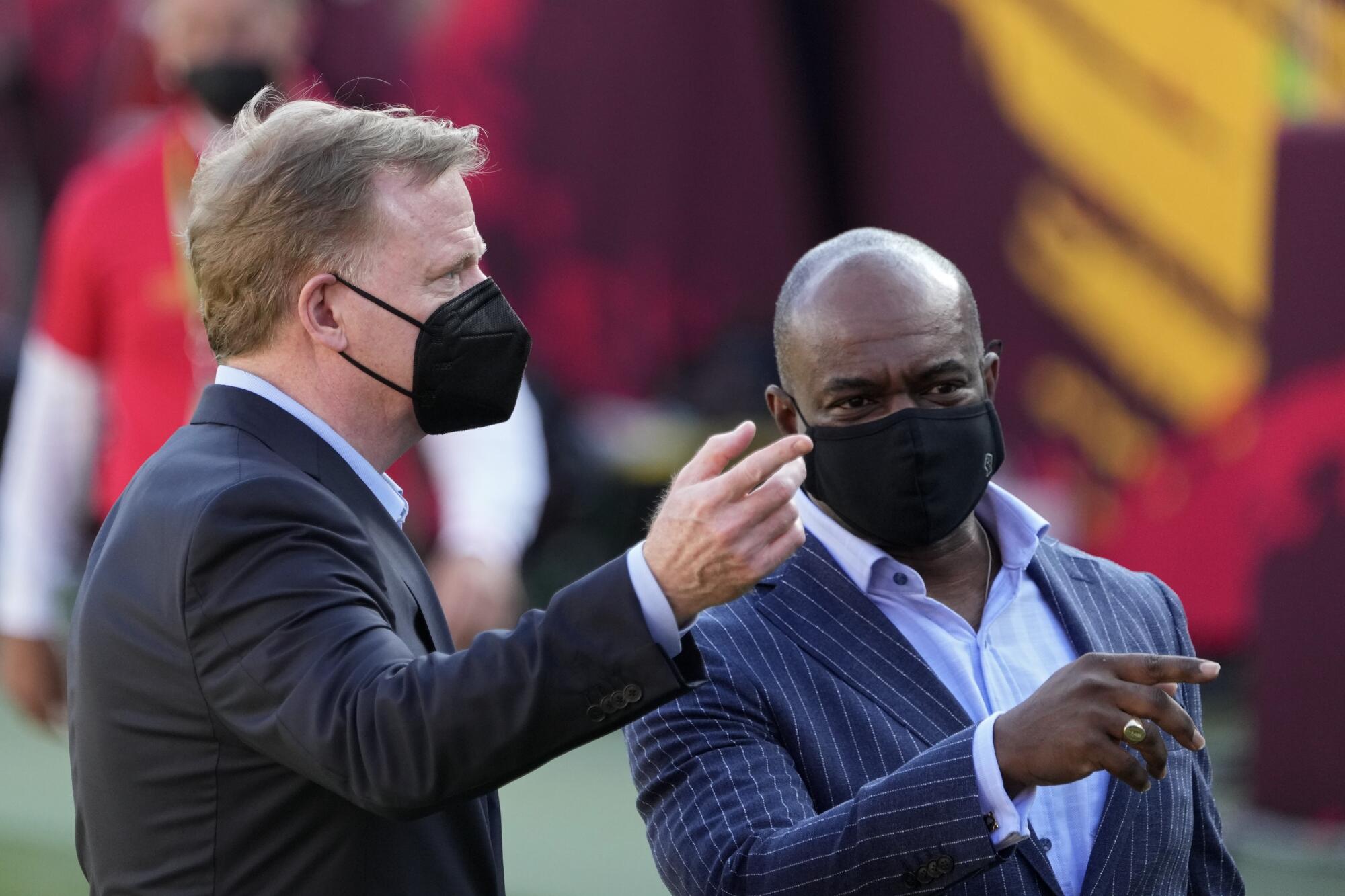
If someone tested positive for the virus, the league needed to know who had been in close contact with that person, and it couldn’t rely solely on people’s recall and willingness to share information. Everyone in the league — players, coaches, and other employees — wore a domino-sized electronic device at work that recorded the proximity and duration of contact between users.
The discrete plastic “SafeTags” were developed by a German company called Kinexon, which made chips that tracked the location or movement of athletes on the field. Early in the pandemic, the company pivoted and reprogrammed its wearables to simply record contact between users. The league didn’t have the time to test and fine-tune those devices before implementing them, and instead made those adjustments on the fly.
In addition to conducting 954,830 coronavirus tests on more than 7,000 people a week, the NFL also used trackers to keep players and team staff safe.
“Typically, I would have been paralyzed by not being able to test,” said Michelle McKenna, the NFL’s chief information officer. “But you can’t be afraid to fail. And Roger lived that during this time.
“When he can’t control a situation it’s very taxing on him. He couldn’t will it into being. He just had to trust us, and that was a big step.”
Sills warned everyone there would be positive tests, and that a COVID-zero season was a fantasy. The strategy: identify and isolate the infected individual as quickly as possible, do thorough contact tracing and isolate close contacts, and thereby contain a potential outbreak.
“Any decisions that we made about game schedules were always driven only by the medical data,” said Sills, who often spoke with Goodell multiple times a day. “His question to me was always, ‘When do we think we can safely proceed, independent of all other considerations?’ It was never about competitive concerns or television schedules or anything of that nature. He made that very clear not only to me but to everyone else in the league.”
The daily testing had a bumpy start. In the first week, a minor earthquake in Southern California, a hurricane in Florida, and a driver transporting tests who hit a deer resulted in various lab delays. The league pressed for better testing, and near the end of the regular season transitioned from overnight results to rapid PCR tests, developed by San Diego-based Mesa Biotech, that produced results within 30 minutes. The commissioner continually pushed for better and more efficient solutions.
“No one had ever done that before, to stand up 32 testing locations where people were going to get tested daily, get them to labs and have them certified at the highest level,” said Chris Halpin, the league’s chief strategy and growth officer. “You went to bed not knowing what you were going to wake up to the next day.”
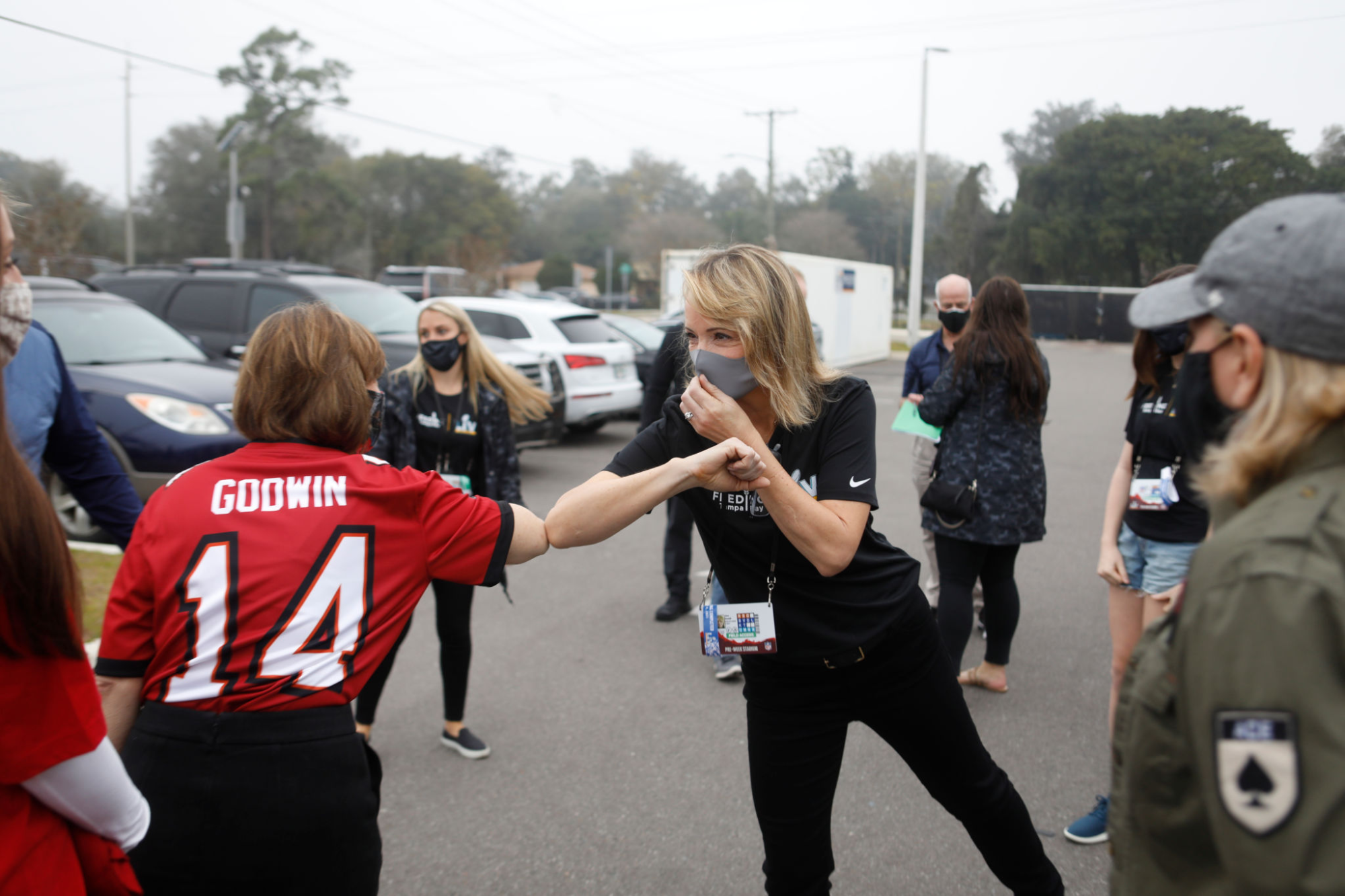
Goodell spent much of 2020 working virtually, bunkered at home with his wife, Jane, and their two daughters, college sophomores who attended classes online.
“It made for a unique experience for everybody,” Jane said. “I told our girls, ‘This is an unusual situation that most likely will never happen again, so take advantage of it. You have your dad at breakfast, lunch and dinner. Ask him questions about what it’s like to operate in a crisis. How do you keep a cool head? How do you keep positive? How do you persuade people to come along with your vision? This will be better than any MBA class you’re ever going to take.’ ”
Shadowed by Blake, the family’s 10-year-old Golden Retriever, the commissioner typically would be on the phone in his office from the early morning until late at night, talking to a lot of governors and mayors, and emerging mostly for meals and his daily workout. Normally, he gets up before dawn. Even at 7 a.m. he’ll greet colleagues in the basement gym at NFL headquarters with “Good afternoon.”
A skeleton crew worked at NFL headquarters. Brian McCarthy, an NFL vice president of communications, would get a reading on his day during his commute. As soon as he arrived at Times Square, midway through his walk from the bus station, his phone would buzz. The COVID Chasers. That’s the nickname he gave the reporters texting and calling to confirm news of players who had tested positive.
He’d walk briskly past the “Good Morning America” studios and scan the ticker for any more developing news. An outbreak could happen anywhere, at any moment.
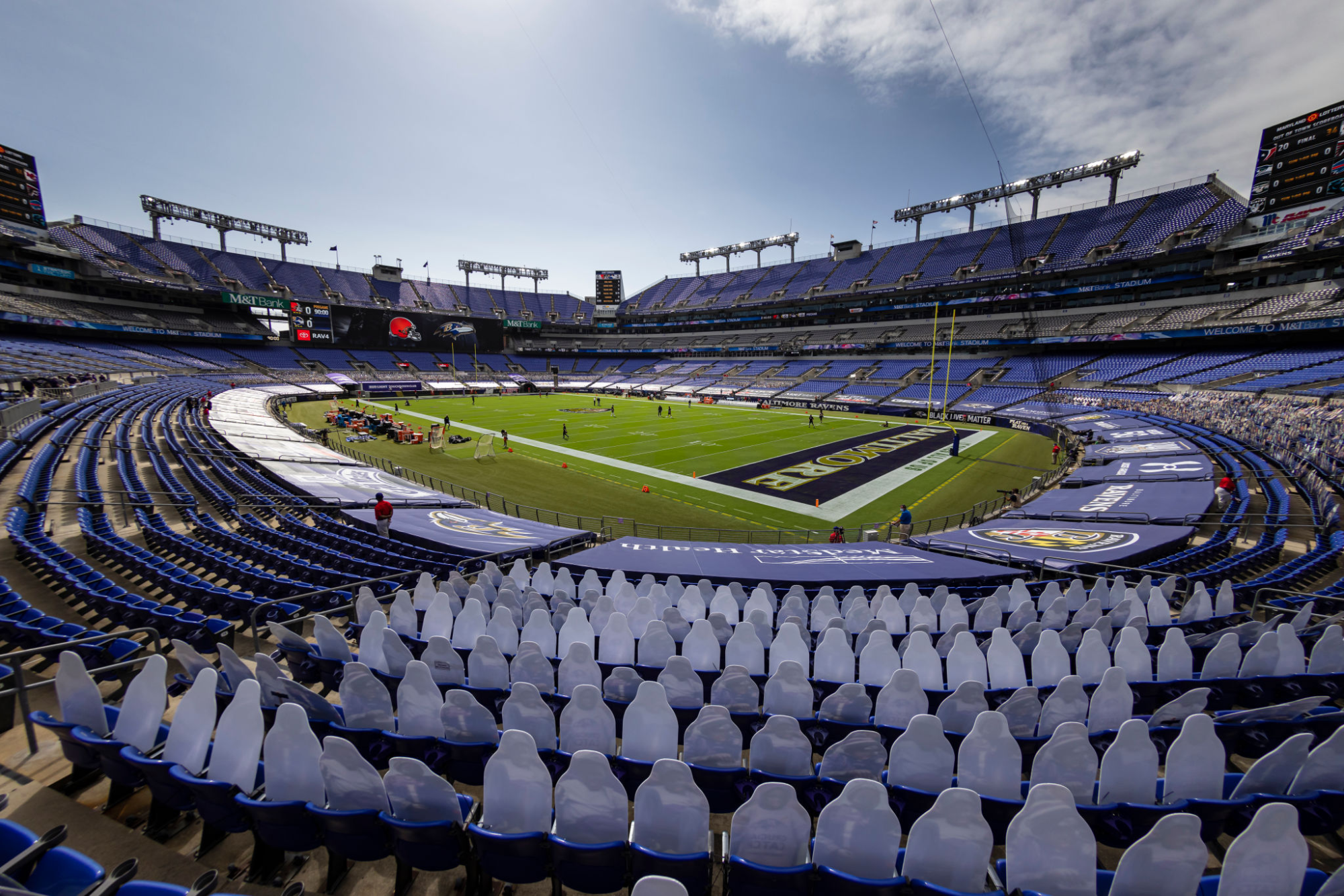
In a normal season, league employees focus on seven days at a time, just get through week after week. But, McCarthy said, “We were living seven minutes at a time.”
“Across the businesses in the country, [this has been] one of the best examples of labor and management working together to do something that we couldn’t do alone.”
— DeMaurice Smith
Then came Week 12. Baltimore was supposed to play at Pittsburgh on Thanksgiving night, but a virus outbreak among the Ravens delayed the game three times, all the way to the following Wednesday afternoon. At least one Baltimore player tested positive nine days in a row. It was the closest the NFL came to adding an 18th week to the regular season.
Conditions were changing so rapidly that on Wednesday morning, mere hours before kickoff, NFL executive vice president of football administration Dawn Aponte received Mesa test results one by one to make sure the Ravens could field a team. She had a white board where she tracked each player. Colleagues gathered around her fifth-floor office to keep tabs on the countdown.
“At one point I remember we were a couple hours in and I was like, ‘We have no specialists. We don’t have a kicker, we don’t have a punter,’ ” Aponte said. “And the team doctor came through, and I was like, ‘We can play the game without the team doctor!’ ”
NBC play-by-play announcer Mike Tirico hurried just 15 minutes before kickoff to get up to speed on players called up from the practice squad during warm-ups.
“There were a bunch of guys we weren’t expecting to play because we didn’t know who was going to be positive,” Tirico said. “It was the biggest scramble to get the roster right. Never had that before in my career.”
The league did everything it could to get that game in the books, and at the end of that 19-14 Pittsburgh victory Tirico noted it was the longest week in NFL history — 150 hours, 10 minutes from the kickoff of the first game to the final play of the last.
But the NFL took a different view of Denver’s game that same week, even though four Broncos quarterbacks had been ruled out as close contacts, and the team had to start a practice-squad receiver at quarterback.
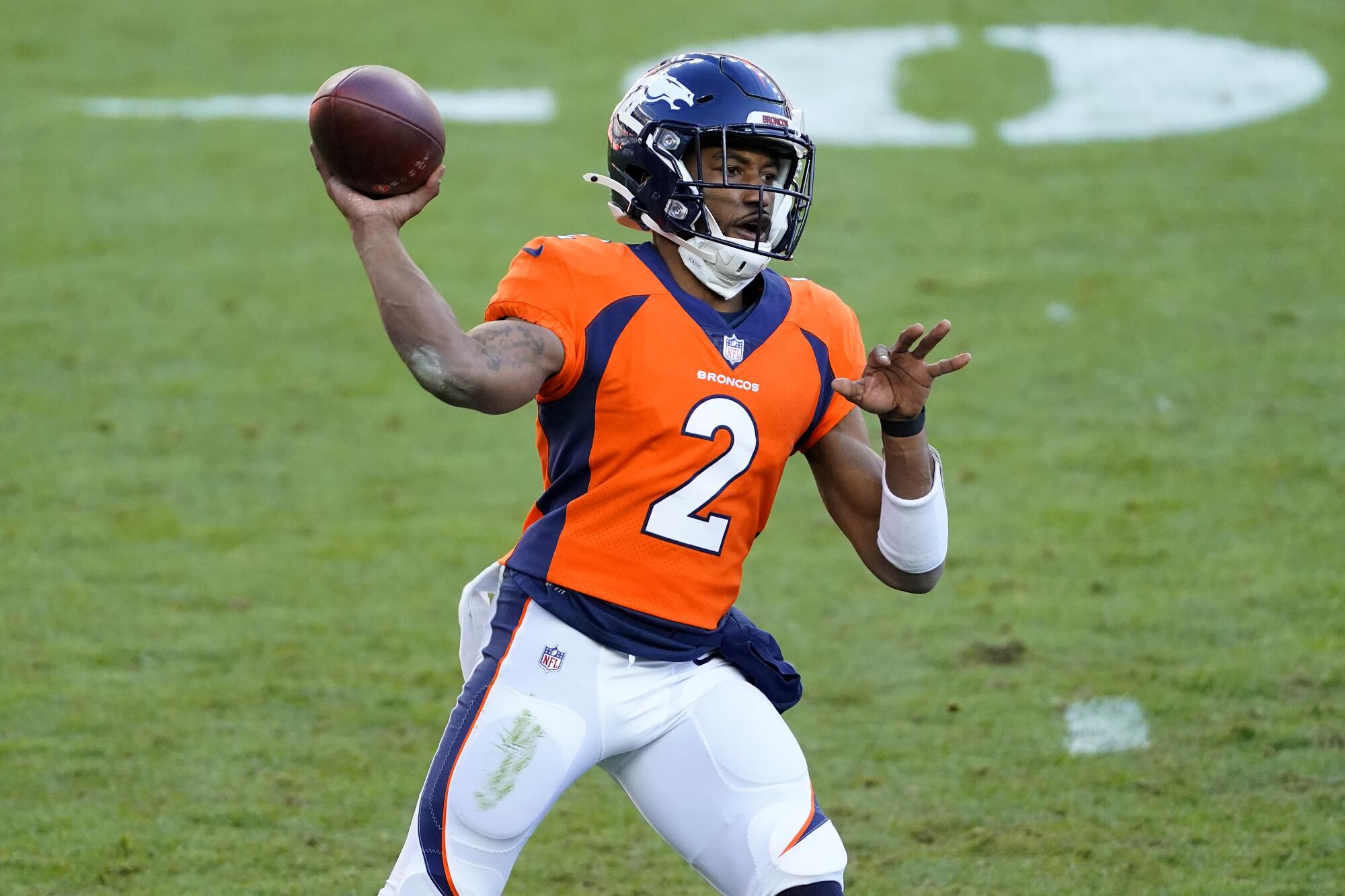
John Elway, Denver’s president of football operations, made several frustrated pleas to Goodell to postpone the Sunday game until Tuesday, when the quarterbacks would be available. The league denied those requests because surveillance video from Denver’s facility showed the quarterbacks had tried to fool the system. They had removed their contact-tracing devices and put them in the four corners of the meeting room, then they sat together to watch film. That close contact automatically made them ineligible to play.
Even as COVID numbers climbed across the nation in December, the positive tests in the NFL declined. The league’s coronavirus positivity rate through the season was 0.08%, considerably lower than that of the nation, which has been in the range of 5-13% depending on the time of year and region.
“We always seemed to have a plan,” said Washington Football Team coach Ron Rivera, who had a close look at the inner workings of the league as a member of the competition committee. “Every time there was a setback, there was a contingency.”
Heading into the Super Bowl, CBS announcer Jim Nantz made a suggestion to Goodell that the league fill the seats with vaccinated healthcare workers. The commissioner liked that idea, and the NFL wound up distributing $18 million in tickets to first responders in the Tampa area and beyond.
“Everybody’s eyes had a similar feeling like, we survived, we did it, we’re proud of ourselves.”
— Michelle McKenna, the NFL’s chief information officer
Those people wound up watching in person as the Tom Brady-led Buccaneers beat Kansas City on sports’ biggest stage, becoming the first team to play in and win a Super Bowl on its home field.
After the game, with the against-all-odds season in the books, Goodell and other executives made their way back to the league hotel. Waiting for them out front, trays of freshly charged Kinexon devices, each chip with a glowing green light.
The group had drinks on a raised patio after midnight, wearing masks and staying socially distant. The post-Super Bowl party is typically a time for celebration. Now, more exhaustion than exhilaration.
“Everybody’s eyes had a similar feeling like, we survived, we did it, we’re proud of ourselves,” McKenna said. “But we were all very overwhelmed. There were a lot of people who went back to their room — I know I did — and cried.”
Considering the league oversaw approximately 7,000 tests per day and developed a thorough contact-tracing system, more than football stood to benefit. Medical experts and epidemiologists from the NFL and NFLPA continually shared their findings with the Centers for Disease Control and Prevention. Those groups jointly published a paper at the end of the season that the CDC said was broadly applicable throughout society to limit the spread of the virus.
“It was clear to us, including the commissioner, early on in the year the uniqueness of the work we were doing,” Miller said. “We were going to accumulate so much information about COVID that others wouldn’t have, that we had an obligation to share it. We saw that as part of the mission.”
Six weeks later, the league announced its new TV deals, the result of negotiations that started long before the pandemic. The league nearly doubled its media revenue to more than $10 billion per season.
Fans are amazed at the $5 billion Inglewood venue when it was opened to the L.A. faithful for the first time for Saturday’s Chargers-Rams preseason game.
“The fact that we came out of that season having not missed a game really helped us secure those long-term media agreements,” said Brian Rolapp, the NFL’s chief media and business officer. “It showed the stability the strength of the league and the product. I’m not sure we get those deals without it.”
So now the league is at daybreak of a second COVID season with a fresh set of challenges. An additional week of games means the regular season is even longer, and there are sure to be unexpected twists and turns. The pandemic persists. While the end game is clear, the end zone is not.
More to Read
Go beyond the scoreboard
Get the latest on L.A.'s teams in the daily Sports Report newsletter.
You may occasionally receive promotional content from the Los Angeles Times.


